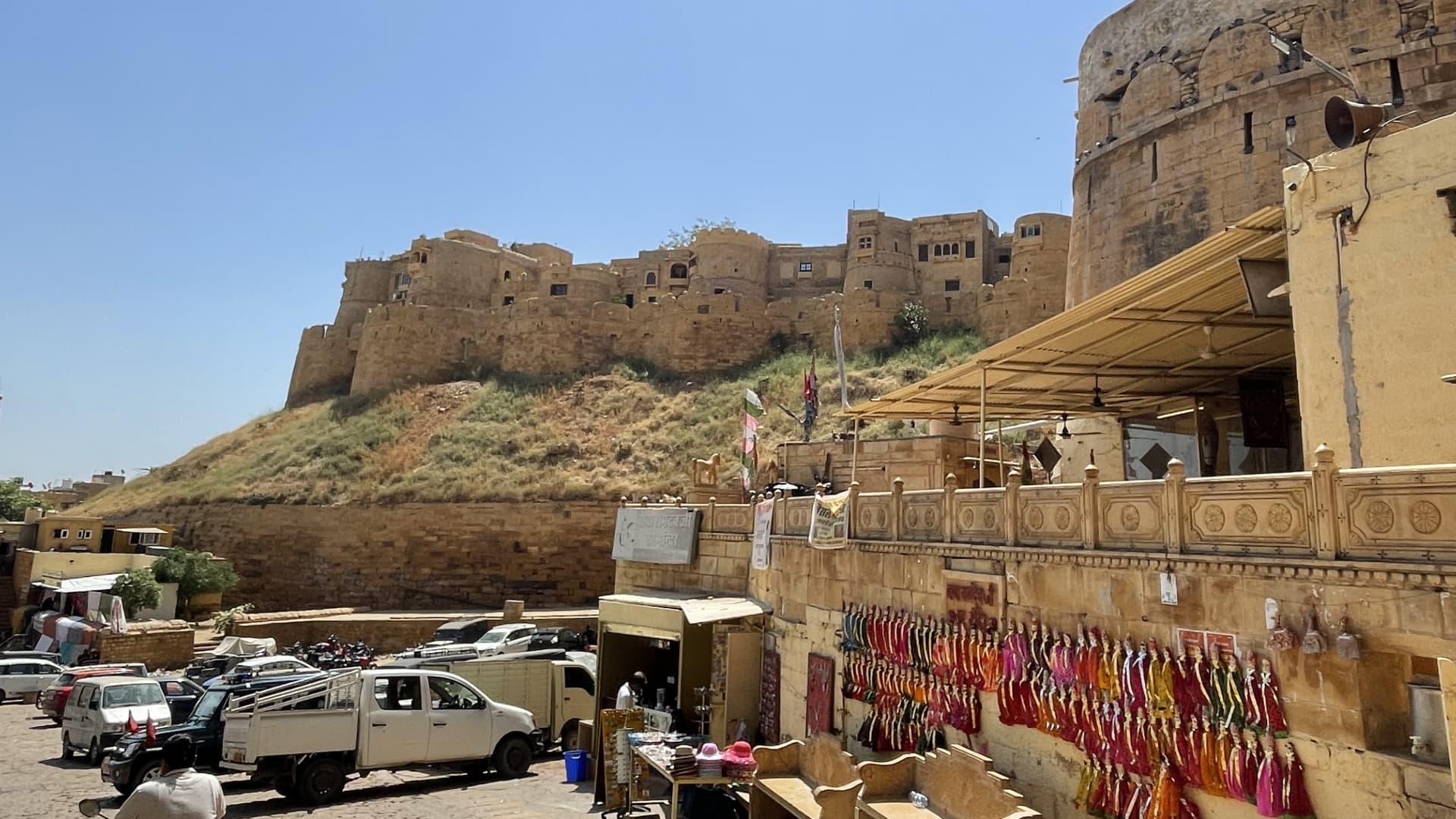I strolled through the tawny labyrinth-like halls — past quirky cafes, curious tourists, men on motorbikes carrying groceries to their homes, and veiled women ringing temple bells.
It’s life as usual in Jaisalmer Fort, a UNESCO World Heritage Site that thousands of people call home.
The city of Jaisalmer is in the Thar Desert in Rajasthan, India — near the Pakistan border. But its remote location doesn’t stop hundreds of thousands of tourists from braving the sandy emptiness to see it.
My guide, Sanjay Vasu has been showing tourists around the city for the past 25 years. He pointed out the Hawa Pol gate, saying its where locals congregate during the hot summer months.
A tourist stops Vasu to ask, “Which way to the Jaisalmer Fort?”
“Well, my friend, you are already within,” said Vasu, smiling at his confusion.
Centuries of life
King Rawal Jaisal built the fabled fort in 1156. With exterior walls that span some 1,500 feet — the space inside is vast, with several areas once marked as living quarters for people, and their families, who served the city’s royal court.
Centuries later, the fort is still home to the descendants of those families.
The fort has a tumultuous history — from its glorious days as a major city on the Silk Road to enduring plunder and conquests by foreign invaders and more recent conflicts with Pakistan.
But today, the fort attracts other types of outsiders – hundreds of thousands of travelers who come to the location, which was named a UNESCO World Heritage Site in 2013, along with five other forts in Rajasthan.
But unlike the others, Jaisalmer Fort boasts a royal palace as well as public temples, shops, hotels, cafes and homes. It is a neighborhood, a business district, and a place of worship for a significant portion of Jaisalmer’s population, which lives within its crumbling walls.
Struggles of a ‘living fort’
But Jaisalmer Fort’s status as a “living fort” isn’t without consequence, said heritage specialist Kavita Jain.
“The fort’s population has increased several fold, leading to an increased load on infrastructure,” she said. “Old sewage lines and improper drainage have caused water to seep into the foundation, and when one stone falls, it can bring down several others.”
Architect and conservationist Asheesh Srivastava has been restoring the fort since 2001. He started the project with the Indian National Trust for Art and Cultural Heritage and now works with Shri Girdhar Smarak Dharmarth Nyas Trust, maintained by the city’s royal family.
Srivastava acknowledges that much remains to be accomplished. “It is important that local residents rekindle their appreciation for their heritage, which may have been overshadowed by routine familiarity.”
Homes go higher
Although the government has allotted land to the residents in the town, they prefer to live within the fort.
Families are expanding their homes, adding new levels and building higher than previous generations. But the original foundation may be unable to withstand the weight.
“I have seen huge voids in the foundation during excavation because sand is washed away,” said Srivastava.
Additionally, artisans proficient in ancient construction techniques, skilled at working with lime plaster and hand-carved stone, are difficult to find now. They learned these time- and labor-intensive skills from their predecessors, but younger tradespeople learn modern construction skills, said Srivastava.
Help needed
Chaitanya Raj Singh, the current King of Jaisalmer whose family owns 60% of the fort, said more locals are needed to help restore it, which would reduce reliance on outside help.
“It will support their livelihood and help them sustain,” he said.
With the assistance of the state government, plans to establish regulations for the construction and expansion of the fort are underway, he said.
“I sincerely hope for greater cooperation from residents and authorities,” said Singh. “This fort has remained frozen in time, and our goal is to keep it for future generations to see as it once was.”
The challenges are manifold and will require help from the government, shop owners and residents. But a thorough restoration of the fort can yield long-term economic benefits, like premium pricing and rents, said Srivastava.
“I have witnessed such successful transformations in my projects, such as in … Lucknow, Uttar Pradesh,” he said. “I hope Jaisalmer Fort addresses the issues in time.”
